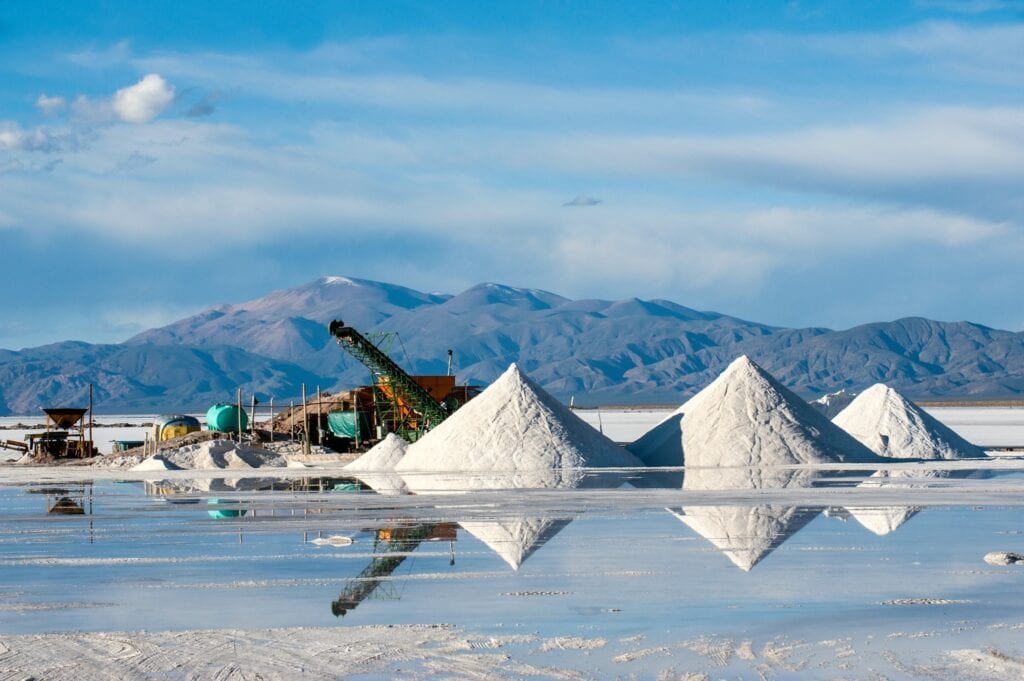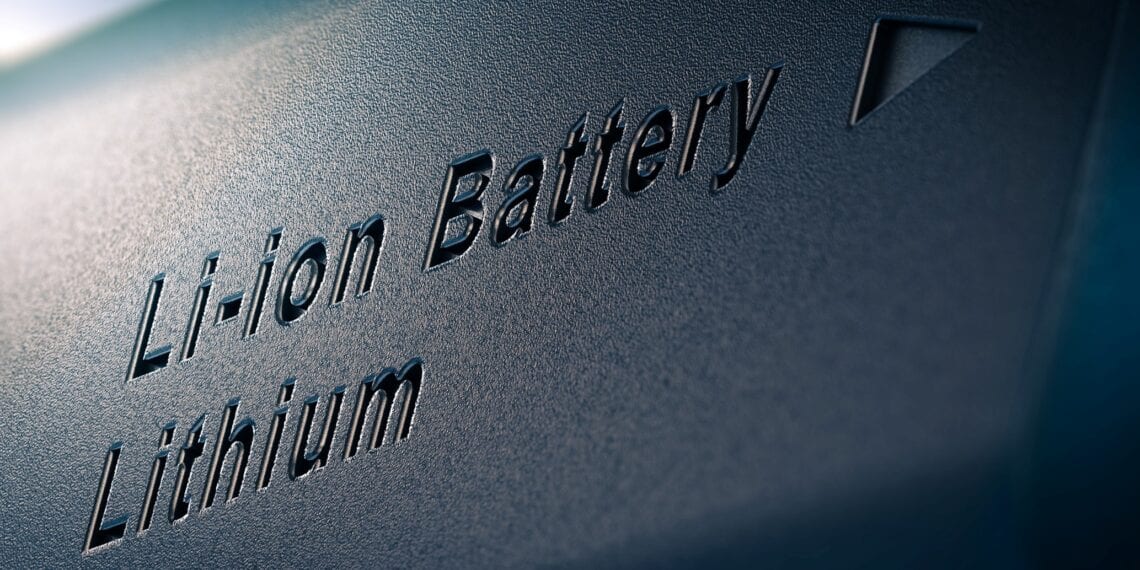Lithium prices are flying at the moment. Last week, S&P Global reported that the price of lithium carbonate CIF Asia rose to US$11,000 per tonne in April 2021. And with demand for the commodity currently ascendant, the size and strength of South America’s lithium reserves are taking on increasing global importance.
According to the US Geological Survey (USGS), nearly 66% of the world’s economic lithium deposits are found in the Lithium Triangle in South America. Currently, the continent also provides more than 50% of the world’s production of lithium, with the region hosting three of the world’s top 10 lithium producing countries: Chile (2nd), Argentina (4th) and Brazil (7th).
The USGS has also noted that another South American nation, Bolivia, is home to the world’s largest salt flat, the Salar de Uyuni, which contains world-class amounts of lithium. There are two other Bolivian salt flats, the Coipasa in the north and Pastos Grandes in the south of Uyuni.
According to leading global electric vehicle (EV) manufacturer, Volkswagen, Chile is clearly the owner of the world’s largest known lithium reserves with eight million tons – well ahead of Australia at 2.7 million tonnes.
It said that South America’s lithium miners also benefit from a lower cost lithium mining opportunity. Chile and Argentina’s lithium comes from salt deserts, which are also known as salars. The extraction of raw materials from salars involves bringing lithium-containing saltwater from underground lakes to the surface where it evaporates in large basins. The remaining saline solution is further processed in several stages until the lithium is suitable for use in batteries.
Demand driving production
Meanwhile, according to the America Society/Council Of The Americas (AS COA), an insatiable appetite for the latest smartphones, along with a need to transition to clean energy, keeps driving demand for lithium.
The lightest of all metals, lithium is highly valued for its high electrical conductivity, which Statista says is a key to many rechargeable devices, such as smartphones, laptops, and energy storage systems, as well as EVs. Statista says with global sales of EVs expected to rise 70% in 2021, the global lithium market is projected to quintuple over the next 35 years.

That bodes well for the countries of the Lithium Triangle—Argentina, Bolivia, and Chile. In a recent new release commentary, FinancialNewsMedia reported that South America is the most likely location where the supply to meet the global rush to supply lithium batteries for EVs will originate.
It stated that Chile and Argentina are currently the two main players, with both having their reserves largely in brine deposits which are the most financially advantageous sites.
“66% of the world’s reserves are in South America. Chile, the number-two producer in the world also has the largest reserves but Argentina is third in both producing and reserves… and more importantly… has less government hurdles to overcome,” the commentary stated.
The report suggested that Argentina’s supportive political regime will provide it with an opportunity to become a major lithium powerhouse.
Current market snapshot
According to Mordor Intelligence, the global lithium market was estimated at 280 kilotons in 2020, and the market is projected to register a CAGR of over 10% between 2021-2026.
A Mordor report found that while the global market was negatively impacted by COVID-19 in 2020, as the lockdowns were lifted, the EV segment picked up the pace to meet the target emission standards set by many countries, which may enhance the demand for lithium batteries and, thus, will stimulate the demand for lithium in the coming years.
Meanwhile, S&P Global is tipping that China’s demand for battery grade lithium carbonate and hydroxide is expected to increase in 2021 on stronger electric vehicle sales, pushing domestic prices higher.
According to S&P Global Platts’ China Battery Metals Outlook for 2021, some 96% of respondents to a survey expected China’s demand for lithium metals to rise further this year, with stimulus measures expected to boost demand for EVs, while 91% and 78% of market participants canvassed thought China’s battery grade lithium carbonate and hydroxide prices will be higher this year than last.
Notably, more than half (57%) of respondents believed spodumene supply would remain tight due to expanding lithium carbonate and hydroxide capacity, which would in turn bolster Chinese lithium metals prices. However, 30% held the opposite view.
Key players on the lithium scene
The booming lithium demand opportunity has not been missed by the mining sector, where a number of new players in the lithium triangle are beginning to make their mark.
Neo Lithium Corp. (TSXV: NLC) has successfully built two sets of pilot evaporation ponds in its pilot pond expansion and operation at its Tres Quebradas lithium brine project (3Q Project) in Catamarca province, Argentina.
COO and director, Gabriel Pindar, said currently the company is taking one step further in optimizing the pilot pond system by building 20% more pond capacity and changing the initial design to emulate the future operation to final pond design.
He said this step will firm up operations and ramp up times in the future mine and result in specific employee training towards operation of production scale ponds.
Galan Lithium Ltd (ASX: GLN) is currently investigating a low-use energy and lithium carbon footprint solution for its flagship Hombre Muerto West (HMW) project located in the South American Lithium Triangle in Catamarca, Argentina.
Chemical laboratory work is being performed by lithium experts Ad-Infinitum in Antofagasta, Chile. The brine concentration model prediction shows a sound correlation between actual laboratory results and the predictive brine evaporation model. Furthermore, these results can be seen across the prediction of the concentration of lithium and impurities.
In parallel, Ad-Infinitum has been optimizing the evaporation route options during the PEA/Scoping Study by testing different reagents in the evaporation process to produce high-grade lithium chloride concentrate.
Lake Resources (ASX: LKE) recently accelerated expansion of its Argentinian lithium projects in response to strong market demand, based on direct lithium extraction from its Cauchari, Olaroz and Paso Brine Projects, in addition to its flagship Kachi Project.
The move follows the recent boost to the Kachi Project, which has seen its NPV upgraded to US$1.6 billion based on 25,500 tpa of high purity lithium production suitable for battery and cathode makers, and an assessment is underway to expand this production even further.
Some 50,000 litres of lithium brine samples are to be sent from Lake’s Cauchari Project for testing by groups specializing in direct lithium extraction and the conversion of concentrates to lithium hydroxide. This will be followed by a scoping study to expand future production, with Lake planning to commence pre-feasibility study work at Cauchari, including environmental impact studies and drilling for a resource statement, later in 2021.
Latin Resources Limited (ASX: LRS) is preparing to commence a new exploration programme on its 100% owned and optioned lithium tenements in the state of Minas Gerais in Brazil.
The company has appointed local geologists to carry out field work to define drill targets on the Salinas tenements. Latin Resources’ geologists completed significant field work on the tenements in 2019 in which they located several occurrences of spodumene never previously known or reported. Executive director, Chris Gale, said focus will be now given to the well advanced spodumene tenure which will allow the company to rapidly drill test any potential lithium deposit and enable it to be quickly advanced to JORC compliancy.












